Category: Good News for a change!
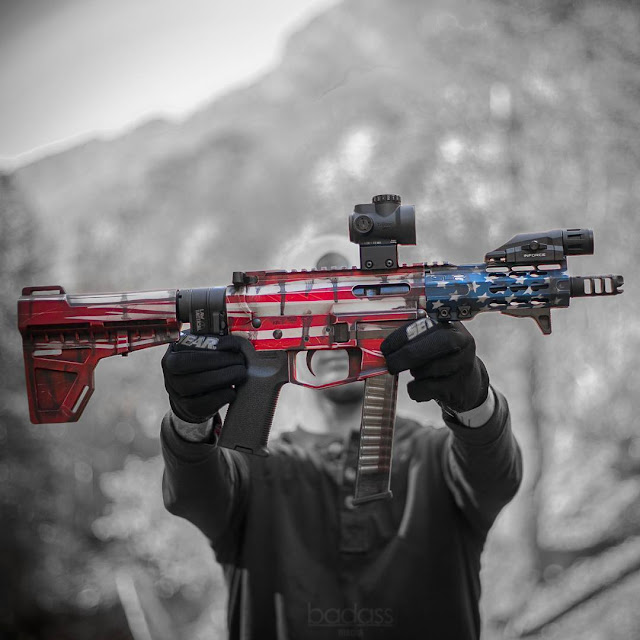
In the military, personnel are taught to always obey the lawful orders of those placed in positions of command over them. In turn, military commanders are taught the weight of those orders and how they can either save soldiers’ lives or lose them.
Throughout history, men and women have followed orders in combat, but sometimes, an order is given and disregarded when a person decides that their life is less important than the lives of others.
Here are 10 acts of bravery that were performed when someone decided that the order they were given was not worth the potential cost to their fellow combatants, civilians, or humanity.
Listverse – Daily Highlights
10 Sergeant Dakota Meyer
US Marine Corps, Operation Enduring Freedom
Sergeant Meyer was serving in Afghanistan in 2009 where, at the Battle of Ganjigal, he was instructed by his commander to disregard a distress call due to an order to fall back. Nearly 100 American troops were pinned down by enemy fire and were repeatedly denied artillery support. Sergeant Meyer realized that the possibility of those troops’ survival was unlikely and took matters into his own hands.After being told by his commanding officer to remain behind with the unit’s vehicles, Meyer refused to follow the order and got into a Humvee with his driver. Under heavy enemy fire, Meyer drove into and out of the battle zone five times and was able to save the lives of more than a dozen fellow Marines.
Meyer’s website describes his actions:
Over the course of the five hours, he charged into the valley time and again. Employing a variety of machine guns, rifles, grenade launchers, and even a rock, Meyer repeatedly repulsed enemy attackers, carried wounded Afghan soldiers to safety, and provided cover for dozens of others to escape.
For his heroic actions in the face of overwhelming odds, and in spite of his refusal to follow the orders of his superior officer, Sergeant Dakota Meyer was awarded the Medal of Honor.
9Private Daniel Hellings
British Army, Operation Enduring Freedom
https://www.youtube.com/watch?v=w0gCyB01Bao
Private Daniel Hellings was on patrol with several Afghan soldiers in Helmand Province, Southern Afghanistan, when an improvised explosive device (IED) exploded in a narrow alleyway. The blast severely injured two service members, blinding one and damaging the other’s legs. Shortly after the first explosion, another was triggered only a few meters from Private Hellings, and a third soldier was injured.
Private Hellings’s commander immediately ordered him to withdraw from the alleyway because it was too dangerous. The commander insisted that an alternate route be found so that they could evacuate the injured soldiers. Hearing these orders, Private Hellings got down on the ground and began an hour-long fingertip search for more explosives. A fingertip search is exactly what it sounds like: He prodded the dirt and debris very carefully and methodically so that he could find the IEDs without setting them off. This is accomplished by lying on the ground only a few inches from the explosives.
He was able to uncover four IEDs, one of which had command wires running the length of the alley, but instead of waiting for a bomb-disposal unit, he continued. His fearless act of bravery in defiance of orders helped to save the lives of his three injured comrades. For demonstrating “a level of courage and ability far beyond that which could be expected of his age, rank, and experience,” Private Hellings was awarded the Queen’s Gallantry Medal.
8Major General Daniel Edgar Sickles
Union Army, Battle Of Gettysburg
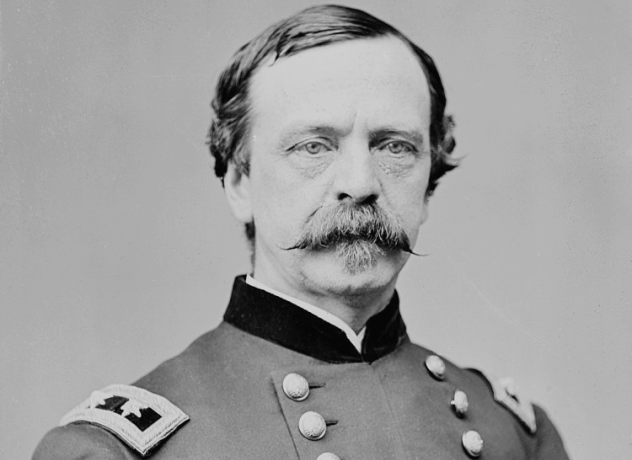
This one is contentious among Civil War historians and has been since the Battle of Gettysburg. General Sickles was commander of the Third Corps under General George Meade during the Battle of Gettysburg in 1863. After being told to move his unit to Little Round Top, Sickles refused and instead moved his men to Peach Orchard, where they were nearly destroyed.
With the Union forces in the wheat field and peach tree orchard, the Confederates, under the command of General James Longstreet, initiated an attack. The small Union forces were nearly destroyed in the attack. Even though his defiance of orders led to the deaths of many of his men, General Sickles’s choice to fight in the orchard instead of the little hilltops allowed for a counteroffensive along the flanks of the attacking Confederates to succeed, thus routing the Rebels and helping to win the battle.
General Sickles was injured in the battle and lost a leg, which he donated to the Army Medical Museum in Washington, DC. He spent many of his remaining years defending his actions as being instrumental in the defeat of the Confederacy at Gettysburg. He was awarded the Medal of Honor (the only combat medal given at the time) and helped to preserve the battlefield at Gettysburg for its use as a cemetery and national historic site.
7Lieutenant Colonel Stanislav Petrov
Soviet Union
If you don’t recall the time back in the early 1980s when the United States and the Soviet Union fought in a bitter thermonuclear war, then we all owe a debt of thanks to Lieutenant Colonel Stanislav Yevgrafovich Petrov. Colonel Petrov was in charge of the command center for the Oko Nuclear Early Warning System when, on September 26, 1983, he disobeyed a standing order to report the probable launch of American nuclear missiles to his command, suspecting that it was a false alarm. It was.Petrov knew that if he alerted his superiors, they would likely order retaliation with nuclear missiles and begin World War III. Because of his ability to think on his feet and surmise the threat as being a false alarm, he effectively saved the entire world from nuclear annihilation. The incident exposed a flaw in the Soviet Union’s missile-warning system and helped to prevent any future situations. Petrov was neither awarded nor punished for his failure to follow orders, but he is remembered as the man who prevented a nuclear war.
6First Lieutenant Frank Luke Jr.
US Army Air Corps, World War I

First Lieutentant Frank Luke Jr. holds the distinguished honor of being the first aviator in US history to receive the Medal of Honor. The award was given to him posthumously following a daring raid that he undertook in spite of being ordered not to fly.
On September 28, 1918, Luke was grounded by his commanding officer and told that he could not fly and would be charged as being absent without leave (AWOL) if he flew the following day. Disregarding this order, Luke took to the skies in his SPAD XIII (a French biplane used at the time) and went on a balloon hunt. Luke was already considered an ace for having 15 aerial combat victories and was known as “The Balloon Buster” for his skill in taking out German aerial reconnaissance balloons, which were used as spotters for artillery. The balloons were always heavily defended by anti-aircraft guns, but Luke went after them anyway.
On what would be his final flight, he successfully took out three balloons before taking heavy machine gun fire and being forced to ditch his aircraft. He climbed from the wreckage and confronted the German military with his sidearm before finally succumbing to his injuries. Regardless of his failure to follow orders, First Lieutenant Frank Luke Jr. was awarded the Medal of Honor for his remarkable skill in being able to destroy 18 balloons in only 18 days of combat.
5Lieutenant Albert Battel
German Wehrmacht, World War II
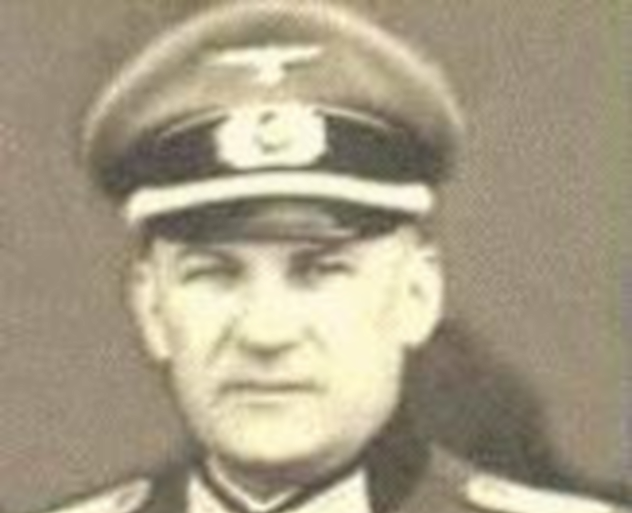
Dr. Albert Battel, a lawyer, a member of the Nazi party, and a lieutenant in the German army, was able to block the SS from taking Jews from the Przemysl ghetto to the Belzec Extermination Camp. He was in command of a unit stationed in Przemysl, Poland, and was in charge of monitoring the Jewish ghetto laborers who were working for the army.
On July 26, 1942, Battel ordered his troops to block off and seal a bridge in order to keep the SS from entering the ghetto to remove the prisoners. Knowing that he was not only defying orders, but also putting himself and his men in danger, Lieutenant Battel was able to extract 80–100 Jewish families and move them to his army headquarters to protect them. Sadly, he was unable to prevent the SS from returning the following day and extracting the remaining Jews. While he wasn’t able to save all of them, several hundred people were able to survive the war thanks in large part to the actions of defiance of one German army officer.
Battel was only reprimanded by his superiors for his actions, and he was eventually promoted before being returned to the front lines. He didn’t know that his actions had reached the ear of Heinrich Himmler, who insisted that he be abolished from the Nazi party at the conclusion of the war and arrested. This never came to pass, as Battel was discharged due to a heart condition in 1944.
He survived the war, and his work and efforts in saving the Jews was honored as being “Righteous among the Nations,” a special honor for Gentiles who worked during the holocaust to save Jews from extermination from the Nazis.
4Corporal Desmond Doss
US Army, World War II
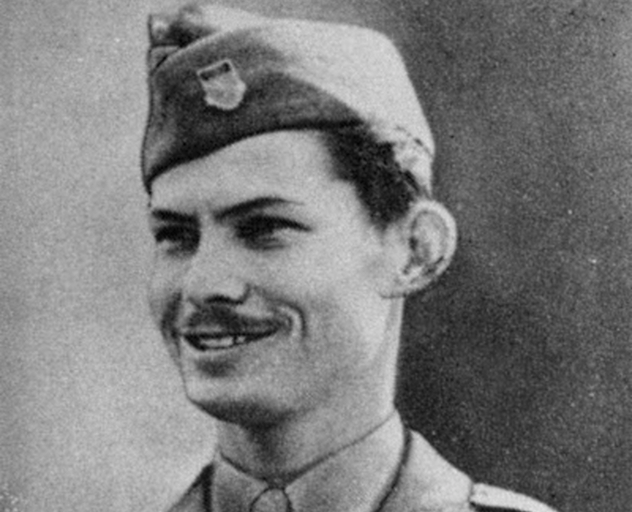
Interestingly, Corporal Desmond Doss defied orders by refusing to carry any weapon into combat, not even a knife. This was the result of his personal beliefs as a member of the Seventh-day Adventist church. Though he was able to join the military and serve during World War II, Corporal Doss maintained his status as a conscientious objector.
His refusal to carry a weapon and his actions as a medic earned him the Medal of Honor. In April 1945, Doss was accompanying the First Battalion as they attempted a summit where they took heavy artillery and small-arms fire. Seventy-five men were wounded in the attack, but Corporal Doss refused to take cover and instead personally moved all 75 men, one at a time and under heavy fire, to a safe area. The following month, he again exposed himself to heavy rifle and mortar fire in the rescue of another man who was severely injured.
On at least five separate occasions over the course of approximately 22 days, Corporal Doss personally rescued dozens of his comrades while under enemy fire. He was finally wounded by a grenade, which severely damaged his legs, and was struck by a sniper’s bullet, which injured his arm. Even then, he insisted that he be taken off his litter in lieu of another man whom he considered to be more seriously wounded. For his bravery in the face of severe enemy opposition and for his refusal to carry even the smallest means to defend himself, Corporal Doss was awarded the Medal of Honor.
3Lieutenant Thomas Currie ‘Diver’ Derrick
Second Australian Imperial Force, World War II
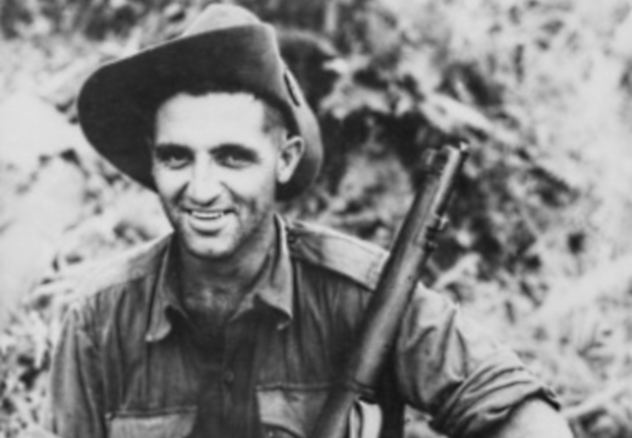
During the Battle of Sattleberg, in New Guinea, Lieutenant Derrick distinguished himself and was awarded the Victoria Cross, the highest military decoration for members of the British and Commonwealth armed forces. The battle was hard-fought and may not have been as successful for the Australians had Derrick obeyed the orders of his commanding officer and withdrawn as he was told.
The Battle of Sattleberg was a push against Japanese forces for control of the town of Sattleberg, in which the Australians slowly saw gains over a period of eight days. As they advanced, the Japanese soldiers pressed hard against them, and the cost was high. On November 24, 1943, Derrick was in command of a small unit and was told to withdraw due to an inability to push for further ground. In response, Derrick said, “Bugger the CO. Just give me twenty more minutes and we’ll have this place.”
He then proceeded to move his men further up the hill toward the city and silenced 10 machine gun posts with accurate rifle and grenade fire from approximately 7 meters (23 ft). His push demoralized the Japanese forces, who withdrew from their position. Derrick then returned to his platoon and pushed them further toward the town before the rest of the battalion joined them the following morning and succeeded in taking the city.
The battalion commander insisted that the flag be hoisted by Derrick, who raised the Australian Red Ensign above Sattleberg, New Guinea, at 10:00 AM on November 25, 1943. For his gallantry in combat and in spite of his refusal to follow orders to withdraw, the king awarded Derrick with the Victoria Cross stating that, “Undoubtedly Sergeant Derrick’s fine leadership and refusal to admit defeat, in the face of a seemingly impossible situation, resulted in the capture of Sattleberg.”
2Major David Teich
US Army, Korean War
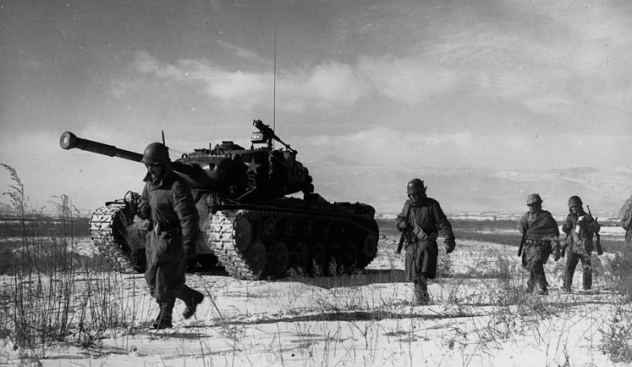
On April 24, 1951, then-Lieutenant David Teich was a member of a tank company that was near the 38th Parallel (the boundary that currently marks the demilitarized zone between North and South Korea) when a weak radio call came in for support. Members of the Eighth Ranger Company were nearby, wounded, and under heavy fire, as nearly 300,000 Chinese soldiers moved toward their position. Having been ordered to withdraw, Teich approached his commander and asked if he and some of his fellow tankers could remain behind and attempt to rescue the Rangers.
The captain replied, “We’ve got orders to move out. Screw them. Let them fight their own battles.” Leich refused to follow that order and manned a rescue attempt anyway. When the tanks approached Hill 628, 65 Rangers climbed the hill under heavy fire and boarded the tanks. So many men were sitting on the tanks that the guns were no longer visible.
Teich’s actions saved the lives of dozens of men who would certainly have been killed or captured had he not disobeyed the orders of his commanding officer. More than six decades after the war, Teich still receives letters from the survivors thanking him for what he did on that day in April 1951.
1General Dietrich Von Choltitz
German Wehrmacht, World War II
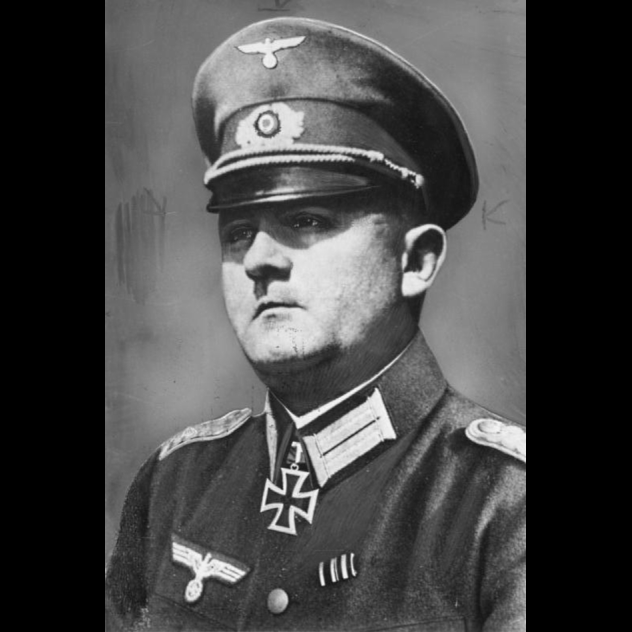
General Dietrich von Choltitz took command of Nazi-occupied Paris on August 8, 1944. When he did so, Hitler told him that he should be prepared to destroy all religious and historic monuments should the city fall to the Allies. At the time, the Allied forces of the United States, Great Britain, and the French Resistance fighters were closing in on the city.
Paris was surrendered on August 25 without a monument or building destroyed. In his memoir Is Paris Burning? Choltitz wrote that the titular question was asked of him by Hitler, but knowing the city was lost and not wanting to cause further destruction, bloodshed, and damage, Choltitz refused to follow the orders of the fuhrer. “If for the first time I had disobeyed, it was because I knew that Hitler was insane.” Choltitz risked the lives of his family and himself by lying to the chief of staff, informing him that the destruction of Paris had begun.
According to both Choltitz and his son, these events played out as he said. The French have never accepted these claims and have instead insisted that over 2,000 French Resistance fighters liberated the city. Even though the French insist that it was the Parisians themselves who saved the city, it is apparent that Choltitz was both ordered to destroy the City of Lights and had an opportunity to do so. He may have chosen to disregard the order from Hitler for his own reasons, but the fact remains that the orders were never carried out, and Paris remains a center for art and culture to this day.
Your Army
Medal of Honor announced for soldier who fought through three floors of insurgents in Fallujah
The president will award the Medal of Honor on June 25 to a soldier who fought through a nest of insurgents during the second Battle of Fallujah in 2004, the White House officially announced Monday.
Then-Staff Sgt. David G. Bellavia originally received the Silver Star for his actions, but his citation was revisited as part of a review of valor awards and determined worthy of the nation’s highest combat award.
The award will give Bellavia one of now seven Operation Iraqi Freedom Medals of Honor, and make him the only living recipient from the Iraq War.
During the battle, Bellavia single-handedly killed multiple insurgents, including one during hand-to-hand combat.
A squad leader at the time, Bellavia, now 43, was clearing a block of buildings when his platoon was pinned down on Nov. 10, 2004, in Fallujah, Iraq.
The first nine buildings were found to be unoccupied, but were filled with rockets, grenade launchers and other weapons. When Bellavia and four others entered the 10th building, they came under fire from insurgents in the house, according to his Silver Star citation.
The ensuing gun battle injured several soldiers. Bellavia switched out his M16 rifle for an M249 SAW gun and entered one room where the insurgents were located to spray it with gunfire, forcing the Jihadists to take cover and allowing the squad to move out into the street.
Other insurgents on the rooftop of the building began firing on his squad below, forcing them to seek cover in a nearby building. Bellavia then went back to the street and called in a Bradley Fighting Vehicle to shell the houses before re-entering the building to assess the scene.
Upon entering, Bellavia gunned down one insurgent who was loading an RPG launcher. A second enemy fighter began firing as he ran toward the kitchen and Bellavia fired back, wounding him in the shoulder. A third insurgent then began yelling from the second floor.
/arc-anglerfish-arc2-prod-mco.s3.amazonaws.com/public/OI64KVSJZRBVZJU3YOQNAOTCSE.JPG)
Cache of weapons confiscated in Fallujah by Staff Sgt. David Bellavia and his unit. (Army)
Bellavia then entered the uncleared master bedroom and emptied gunfire into all the corners, at which point the wounded insurgent entered the room, yelling and firing his weapon, the citation reads. Bellavia fired back, killing the man. Bellavia was then shot at by another insurgent upstairs and the staff sergeant returned the fire, killing him as well.
“At that point, a Jihadist hiding in a wardrobe in a bedroom jumped out, firing wildly around the room and knocking over the wardrobe. As the man leaped over the bed he tripped and Sergeant Bellavia shot him several times, wounding but not killing him,” the citation reads. “Another insurgent was yelling from upstairs, and the wounded Jihadist escaped the bedroom and ran upstairs. Sergeant Bellavia pursued, but slipped on the blood-soaked stairs.”
Bellavia followed the bloody tracks of the insurgent up the stairs to a room on his left. Hearing the wounded insurgent inside, he threw a fragmentary grenade into the room, which caused the insurgent to flee to the roof. Two more insurgents began yelling from the third story of the building.
This soldier is about to be the Iraq War’s first living Medal of Honor recipient
Staff Sgt. David Bellavia, who originally received a Silver Star, will receive his upgraded award this month.
Bellavia grabbed the wounded insurgent and put him in a choke hold to keep him from giving away their position.
“The wounded Jihadist then bit Sergeant Bellavia on the arm and smacked him in the face with the butt of his AK-47. In the wild scuffle that followed, Sergeant Bellavia took out his knife and slit the Jihadist’s throat,” the Silver Star citation reads. “Two other insurgents who were trying to come to their comrade’s rescue, fired at Bellavia, but he had slipped out of the room, which was now full of smoke and fire.”
A final insurgent dropped from the third story to the second-story roof. Bellavia saw the fleeing man and fired at him, hitting him in the back and the legs and causing him to fall off the roof and die.
By this point, five members of the platoon had entered the house and took control of the first floor. Before they would finish off the remaining insurgent fighters, however, they were ordered to move out of the area because close air support had been called in by a nearby unit.
The White House release said that Bellavia’s actions that day rescued an entire squad, cleared an insurgent strongpoint, and saved many members of his platoon from possible death.
Bellavia originally enlisted in the Army in 1999 and served in Kosovo, before deploying to Iraq in 2004 with Company A, Task Force 2-2, 1st Infantry Division. After leaving the service on Aug. 16, 2005, he has engaged in New York state politics and continued to serve the military and veteran communities through various advocacy groups.
Bellavia now has his own daily radio talk show for WBEN in Buffalo.
https://youtu.be/gfqeDVXyy0c

World War II is over and instead of the expected Depression. America enters into a Golden Age for most of its Citizens! God how green with envy am I! Grumpy

Riveting Twitter Thread on the Infamous ‘Roof Koreans’ of the LA Riots Highlights Importance of the Second Amendment
During the 1992 Rodney King riots in Los Angeles, armed Korean store owners stationed themselves on top of their shops to protect their property from looters and became known as the “Roof Koreans.”
A riveting Twitter thread celebrated these brave heroes as the anniversary of the riots approaches.
From April 29 to May 4 in 1992, rioters burned and looted everything in sight to protest the acquittal of four Los Angeles Police Department officers for excessive force in the beating of King. The riots left over $1 million in property damage. Reginald Denny, a white truck driver who stopped at a traffic light in the middle of the riots, was also pulled from his truck and beat nearly to death by a mob of rioters. His skull was fractured in 91 places.
By the end of the rioting, 53 people were killed, including 35 from gunfire.
The poster began by describing how Korean citizens were initially being targeted by the rioters.
“Koreans were savagely attacked, while their businesses and homes were looted and burned. They did what good citizens do, they called the police and they waited for help. Unfortunately, police were stretched thin and were also being targeted for violence,” they wrote.
“So, what do good American citizens do when the police can’t or won’t help them and hordes of armed looters are descending upon them? They become peak American citizens by exercising their God given and constitutionally protected rights,” the thread continued. “Unfortunately for the rioters, most of these fine Americans were legal immigrants from Korea. As such, many of them had fulfilled Korea’s mandatory service obligations prior to earning American citizenship and took to the 2nd amendment like beef to bulgogi.”
The thread joked, “many were carried to the rooftops by bald eagles (or so the legend goes) and Roof Koreans were born.”
Two particular members of the Roof Koreans, David Joo and Richard Park, stood out from the rest.
“David, Richard, and their fellow citizens had to do some on-the-spot soul searching. Yeah they could run for their lives. But what’s life worth if you abandon everything you’ve spent your life toiling for, the existence you’ve sweated and labored for, in the face of danger?” the thread asked.
“Over 5 days, more than 1000 buildings in the LA area were destroyed, and over a billion dollars worth of damage done. But guess which communities endured the storm with minimal damage and injury? That’s right. The store David and Richard fought from still stands today,” he continued.
“We aren’t responsible for mass shootings, murder, or suicides. Neither are our weapons. You are your own best defense. Don’t let weak cowards scare you into giving up the best tools for that responsibility. And if you want to deprive me of my rights, come and take them,” the powerful and informative thread concluded.
“Thoughts from a Hipster Coffee Shop”
Thoughts from a hipster coffee shop…
I’m sitting in a small coffee shop near Nokomis trying to think of what to write about. I scroll through my newsfeed on my phone looking at the latest headlines of Democratic candidates calling for policies to “fix” the so-called injustices of capitalism. I put my phone down and continue to look around. I see people talking freely, working on their MacBook’s, ordering food they get in an instant, seeing cars go by outside, and it dawned on me. We live in the most privileged time in the most prosperous nation and we’ve become completely blind to it. Vehicles, food, technology, freedom to associate with whom we choose. These things are so ingrained in our American way of life we don’t give them a second thought. We are so well off here in the United States that our poverty line begins 31 times above the global average. Thirty. One. Times. Virtually no one in the United States is considered poor by global standards. Yet, in a time where we can order a product off Amazon with one click and have it at our doorstep the next day, we are unappreciative, unsatisfied, and ungrateful.
Our unappreciation is evident as the popularity of socialist policies among my generation continues to grow. Democratic Congresswoman Alexandria Ocasio-Cortez recently said to Newsweek talking about the millennial generation, “An entire generation, which is now becoming one of the largest electorates in America, came of age and never saw American prosperity.”
Never saw American prosperity. Let that sink in. When I first read that statement, I thought to myself, that was quite literally the most entitled and factually illiterate thing I’ve ever heard in my 26 years on this earth. Now, I’m not attributing Miss Ocasio-Cortez’s words to outright dishonesty. I do think she whole-heartedly believes the words she said to be true. Many young people agree with her, which is entirely misguided. My generation is being indoctrinated by a mainstream narrative to actually believe we have never seen prosperity. I know this first hand, I went to college, let’s just say I didn’t have the popular opinion, but I digress.
Let me lay down some universal truths really quick. The United States of America has lifted more people out of abject poverty, spread more freedom and democracy, and has created more innovation in technology and medicine than any other nation in human history. Not only that but our citizenry continually breaks world records with charitable donations, the rags to riches story is not only possible in America but not uncommon, we have the strongest purchasing power on earth, and we encompass 25% of the world’s GDP. The list goes on. However, these universal truths don’t matter. We are told that income inequality is an existential crisis (even though this is not an indicator of prosperity, some of the poorest countries in the world have low-income inequality), we are told that we are oppressed by capitalism (even though it’s brought about more freedom and wealth to the most people than any other system in world history), we are told that the only way we will acquire the benefits of true prosperity is through socialism and centralization of federal power (even though history has proven time and again this only brings tyranny and suffering).
Why then, with all of the overwhelming evidence around us, evidence that I can even see sitting at a coffee shop, do we not view this as prosperity? We have people who are dying to get into our country. People around the world destitute and truly impoverished. Yet, we have a young generation convinced they’ve never seen prosperity, and as a result, elect politicians dead set on taking steps towards abolishing capitalism. Why? The answer is this, my generation has ONLY seen prosperity. We have no contrast. We didn’t live in the great depression, or live through two world wars, or see the rise and fall of socialism and communism. We don’t know what it’s like not to live without the internet, without cars, without smartphones. We don’t have a lack of prosperity problem. We have an entitlement problem, an ungratefulness problem, and it’s spreading like a plague.
With the current political climate giving rise to the misguided idea of a socialist utopia, will we see the light? Or will we have to lose it all to realize that what we have now is true prosperity? Destroying the free market will undo what millions of people have died to achieve.
My generation is becoming the largest voting bloc in the country. We have an opportunity to continue to propel us forward with the gifts capitalism and democracy has given us. The other option is that we can fall into the trap of entitlement and relapse into restrictive socialist destitution. The choice doesn’t seem too hard, does it?

Left to right: Charles Duke (Apollo 16), Buzz Aldrin (Apollo 11), Walter Cunningham (Apollo 7), Al Worden (Apollo 15), Rusty Schweickart (Apollo 9), Harrison Schmitt (Apollo 17), Michael Collins (Apollo 11), Fred Haise (Apollo 13)
We really dropped the Ball on Space Exploration!

/arc-anglerfish-arc2-prod-mco.s3.amazonaws.com/public/3TOCWEDL4VAMLLLKHTGKZDLL4Q.jpg)
/arc-anglerfish-arc2-prod-mco.s3.amazonaws.com/public/OLJIGRAS2NDK7MCSLTGF443SBE.jpg)













